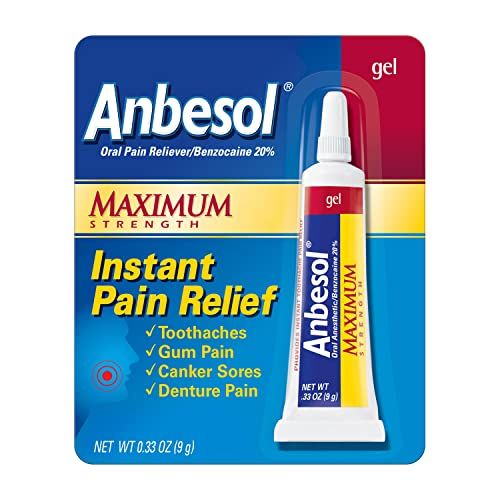
Pain is a common ailment that most of us experience at some point in our lives. Whether it’s a headache, muscle pain, or toothache, finding relief is essential for our overall well-being. While prescription medications are available, over-the-counter (OTC) pain relievers are often the go-to option for many individuals. These medications are easily accessible and provide effective relief for various types of pain. In this article, we will explore the top 20 over-the-counter pain relievers that can help alleviate your discomfort.
1. Acetaminophen
Acetaminophen, commonly known as Tylenol, is one of the most popular OTC pain relievers. It is effective in reducing pain and fever and is safe for most individuals when taken as directed.
2. Ibuprofen
Ibuprofen, including brands such as Advil and Motrin, is another commonly used OTC pain reliever. It works by reducing inflammation and relieving pain caused by headaches, menstrual cramps, arthritis, and minor injuries.
3. Naproxen Sodium
Naproxen sodium, commonly sold under the brand Aleve, is a nonsteroidal anti-inflammatory drug (NSAID) that helps reduce pain and swelling. It is particularly helpful for conditions like arthritis and joint pain.
4. Aspirin
Aspirin, a versatile pain reliever with anti-inflammatory properties, is useful in treating various types of pain like headaches, dental pain, and mild to moderate muscle pain. It is important to note that aspirin may not be suitable for everyone, especially individuals with certain medical conditions or taking specific medications.
5. Topical Analgesics
Topical analgesics, such as creams, gels, or patches, provide localized pain relief by numbing the area. Ingredients like menthol and capsaicin are commonly found in these products and can be helpful for muscle and joint pain.
6. Benzocaine
Benzocaine is a local anesthetic used to relieve pain from minor irritations, cuts, and burns. It is commonly found in products like throat lozenges and dental gels.
7. Lidocaine
Lidocaine is another local anesthetic that helps numb the skin or mucous membranes. It is often used to alleviate pain from minor cuts, burns, or insect bites.
8. Excedrin
Excedrin is a combination of acetaminophen, aspirin, and caffeine, making it particularly effective in treating tension headaches. However, individuals should be cautious with its usage as excessive intake of caffeine can lead to side effects.
9. Co-codamol
Co-codamol is a common pain relief medication comprising codeine and paracetamol. It is often used for moderate to severe pain, such as migraines, dental pain, or post-operative discomfort.
10. Codeine
Codeine is an opioid pain medication that can be found in some OTC pain relievers. It is generally used for mild to moderate pain but can cause drowsiness and constipation.
11. Diclofenac Sodium
Diclofenac sodium is an NSAID used to relieve pain, inflammation, and swelling caused by conditions such as arthritis, sprains, or strains. It is available in the form of tablets, gels, or patches.
12. Paracetamol and Caffeine Combination
Paracetamol combined with caffeine is often marketed as a fast-acting pain reliever. The combination can provide quick relief for headaches and migraines.
13. Hydrocortisone Cream
Hydrocortisone cream is a topical corticosteroid used to relieve itching, redness, and inflammation associated with skin conditions like rashes or insect bites.
14. Muscle Rubs
Muscle rubs are topical creams or ointments that contain ingredients like menthol or camphor. These products help alleviate muscle pain and soreness, making them a popular choice for athletes and individuals with musculoskeletal discomfort.
15. Meftal Spas
Meftal Spas is a combination medication commonly used to relieve menstrual cramps. It contains mefenamic acid, dicyclomine hydrochloride, and paracetamol.
16. Antacids
While primarily intended for relieving heartburn and indigestion, antacids that contain magnesium or aluminum hydroxide can also provide mild pain relief.
17. TENS (Transcutaneous Electrical Nerve Stimulation) Units
TENS units are not a medication but a device that uses electrical impulses to relieve pain. By stimulating the nerves, they can help manage chronic and acute pain in various areas of the body.
18. Methyl Salicylate Patches
Methyl salicylate patches are commonly used for localized pain relief. They work by providing a warming sensation that can help alleviate muscle pain, stiffness, and minor joint pain.
19. Herbal Pain Relief Supplements
Herbal supplements like turmeric, ginger, and devil’s claw are believed to have natural pain-relieving properties. These supplements can be found in various forms, including capsules, powders, or teas.
20. CBD Products
CBD, or cannabidiol, is a compound derived from the cannabis plant that has gained popularity for its potential pain-reducing properties. CBD products, such as oils, creams, or gummies, are increasingly being used to manage pain naturally.
Conclusion
When it comes to pain management, OTC pain relievers offer a wide range of options. However, it is essential to use them as directed and consult a healthcare professional if the pain persists or worsens. Remember, what works for one person may not work for another, so finding the right pain reliever may involve some trial and error. By being mindful of your specific needs and preferences, you can find the OTC pain reliever that provides the relief you seek.





